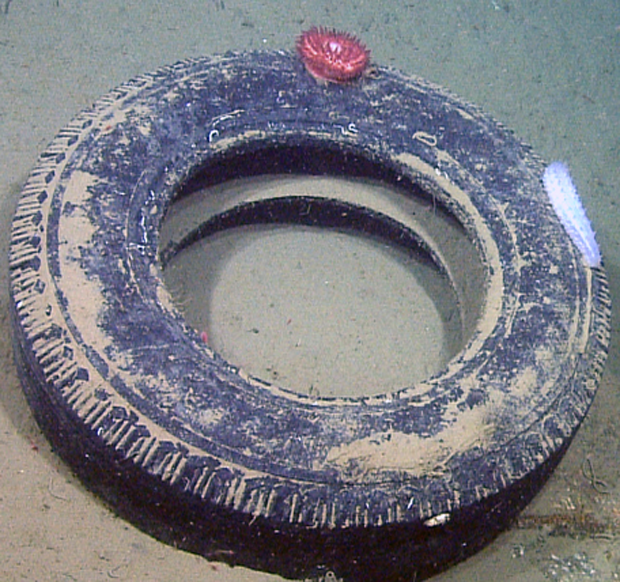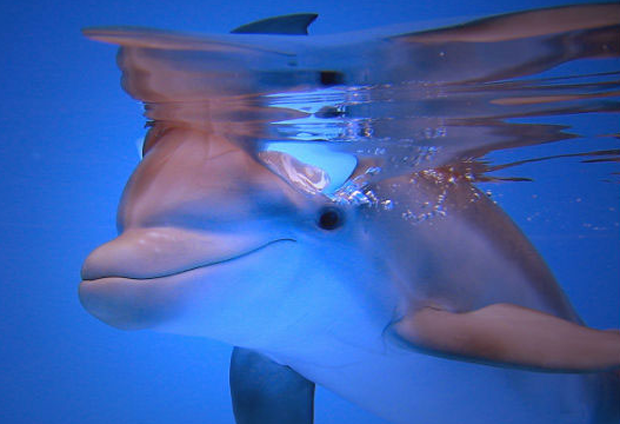Fish with hooks have been found embedded in the throats of dolphins off the coast Florida
[dropcap]T[/dropcap]his is the first time choking has been identified as a significant cause of death in a dolphin population. Between 1997 and 2011, 14 out of 350 dolphins in the Indian River Lagoon died of asphyxiation, all because they choked on spiny fish they shouldn’t be eating, but in more than a third of those cases the fish also had fishing lines or hooks still attached.
 The Indian River Lagoon where the deaths are occurring covers about 40 percent of the Florida coastline and is home to a unique group of about 700 bottlenose dolphins. It is the most biodiverse estuary in the U.S. The dolphins do not leave the lagoon.
The Indian River Lagoon where the deaths are occurring covers about 40 percent of the Florida coastline and is home to a unique group of about 700 bottlenose dolphins. It is the most biodiverse estuary in the U.S. The dolphins do not leave the lagoon.
“Because they are so tied to home, when things change in the environment, they are vulnerable to the changes every time,” said Judy St. Leger, director of pathology and research at SeaWorld Parks and Entertainment and co-author of the study published in PLOS One.
The lagoon has been undergoing significant changes in the last few years, likely due to nutrient pollution from lawns and farms. In 2011, an algae superbloom killed off 60 percent of the sea grass. Since then, 111 manaåtees, 300 pelicans and 46 dolphins have died of unknown causes.
Dolphins choking on fish and fishing line is unrelated to the mysterious animal die-offs, though it suggests an additional human impact on the animals in the lagoon.
Mysterious Die-offs in Florida Lagoon: Analysis
The scientists also looked at 186 dolphins that died in the Atlantic Ocean over the same period and found none of them had died of asphyxiation. That suggests dolphins living in the isolated lagoon are more likely to encounter fish that pose a risk.
When scientists did a necropsy on the dead dolphins, they found fish lodged in some of their esophagus. The fish were between 19 centimeters and 40 centimeters, and had strong dorsal spines that had punctured and embedded in the walls of the esophagus. The dolphin would not have been able to swallow its prey.
Fish with strong dorsal spines include sheepshead and tilapia, both of which are common in the Indian River Lagoon.
In five of the cases, scientists found the fish were entangled in fishing line in the throats of the dolphins. In a couple of cases, fishing lures, which are baits with hooks attached, were embedded in the dolphin’s esophagus anchoring the fish.
If people start fishing even more in the Indian River Lagoon, the incidence of hooked fish might rise, posing a danger to the dolphins, the study finds. “Environmental alterations leading to changes in prey availability or increased interactions with fishing gear may change the significance of fatal choking in dolphin populations,” the authors warn.
St. Leger also worries about lionfish, a hardy invasive species that fish biologists say is beginning to invade the lagoon. Lionfish also have strong dorsal spines, and if dolphins begin feeding on the species, fatal asphyxiation might become more commonplace.






